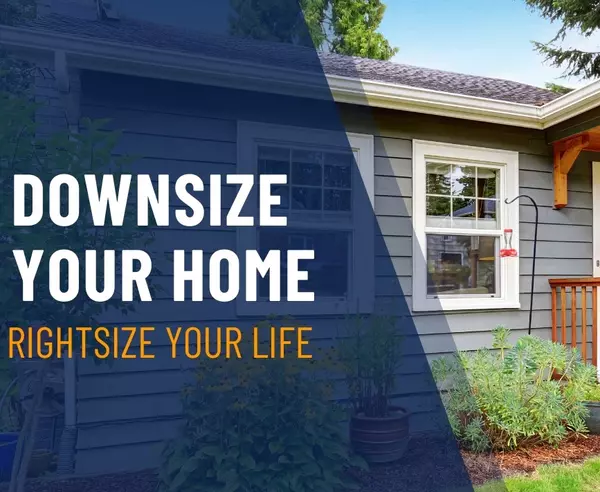Mid-Year Market Update for 2024: What Buyers and Sellers Need to Know

Last December, when the Federal Reserve projected a series of benchmark rate cuts in the coming year, some analysts speculated that mortgage rates—which had recently peaked near 8%—would fall closer to 6% by mid-2024.1,2,3 Unfortunately, persistent inflation has delayed the central bank’s timeline and kept the average 30-year mortgage rate hovering around 7% so far this year.2 While elevated mortgage rates have continued to dampen the pace of home sales and affordability, there have been some positive developments for frustrated homebuyers. Nationwide, the inventory shortage is starting to ease, and an uptick in starter homes coming on the market has helped to slow the median home price growth rate, presenting some relief to cash-strapped buyers.4 There are also signs that sellers are adjusting to the higher rate environment, as a growing number list their properties for sale.4 Still, economists say a persistent housing deficit—combined with tighter lending standards and historically high levels of home equity—will help keep the market stable.5 What does that mean for you? Read on for our take on this year's most important real estate news and get a sneak peek into what analysts predict is around the corner for 2024. MORTGAGE RATE CUTS WILL TAKE LONGER THAN EXPECTED At its most recent meeting on May 1, the Federal Reserve announced that it would keep its overnight rate at a 23-year high in response to the latest, still-elevated inflation numbers.6 While mortgage rates aren’t directly tied to the federal funds rate, they do tend to move in tandem. So, while expected, the Fed’s announcement was further proof that a meaningful decline in mortgage rates—and a subsequent real estate market rebound—is farther off than many experts predicted. “The housing market has always been interest rate sensitive. When rates go up, we tend to see less activity,” explained Realtor.com chief economist Danielle Hale in a recent article. “The housing market is even more rate sensitive now because many people are locked into low mortgage rates and because first-time buyers are really stretched by high prices and borrowing costs.”7 Many experts now speculate that the first benchmark rate cut will come no sooner than September, so homebuyers hoping for a cheaper mortgage will have to remain patient. “We’re not likely to see mortgage rates decline significantly until after the Fed makes its first cut; and the longer it takes for that to happen, the less likely it is that we’ll see rates much below 6.5% by the end of the year,” predicted Rick Sharga, CEO at CJ Patrick Company, in a May interview.8 What does it mean for you? Mortgage rates aren’t expected to fall significantly any time soon, but that doesn’t necessarily mean you should wait to buy a home. A drop in rates could lead to a spike in home prices if pent-up demand sends a flood of homebuyers back into the market. Reach out to schedule a free consultation so we can help you chart the best course for your home purchase or sale. BUYERS ARE GAINING OPTIONS AS SELLERS RETURN TO THE MARKET There is a silver lining for buyers who have struggled to find the right property: More Americans are sticking a for-sale in their yard.9 Given the record-low inventory levels of the past few years, this presents an opportunity for buyers to find a place they love—and potentially score a better deal. In 2023, inventory remained scarce as homeowners who felt beholden to their existing mortgage rates delayed their plans to sell. However, a recent survey by Realtor.com shows that a growing number of those owners are ready to jump in off the sidelines.10 While the majority of potential sellers still report feeling “locked in” by their current mortgage, the share has declined slightly (79% now versus 82% in 2023). Additionally, nearly one-third of those “locked-in” owners say they need to sell soon for personal reasons, and the vast majority (86%) report that they’ve already been thinking about selling for more than a year.10 Renewed optimism may also be playing a part. “Both our ‘good time to buy’ and ‘good time to sell’ measures continued their slow upward drift this month,” noted Fannie Mae Chief Economist Doug Duncan in an April statement.11 However, the current stock of available homes still falls short of pre-pandemic levels, according to economists at Realtor.com. “For the first four months of this year, the inventory of homes actively for sale was at its highest level since 2020. However, while inventory this April is much improved compared with the previous three years, it is still down 35.9% compared with typical 2017 to 2019 levels.”4 What does it mean for you? If you’ve had trouble finding a home in the past, you may want to take another look. An increase in inventory, coupled with relatively low buyer competition, could make this an ideal time to make a move. Reach out if you’re ready to search for your next home. If you’re hoping to sell this year, you may also want to act now. If inventory levels grow, it will become more challenging for your home to stand out. We can craft a plan to maximize your profits, starting with a professional assessment of your home’s current market value. Contact us to schedule a free consultation. HOME PRICES ARE RISING AT A MORE MANAGEABLE PACE Homebuyers struggling with high borrowing costs have something else to celebrate. The national median home price has remained relatively stable over the past year, due to sellers bringing a greater share of smaller, more affordable homes to the market.4 In addition to offering cheaper homes, a recent survey found that home sellers are also adjusting their expectations when it comes to pricing. In many regions, just 12% anticipate a bidding war (down from 23% last year) and only 15% expect to sell above list price (versus 31% in 2023).10 But buyers shouldn’t expect a fire sale. According to Realtor.com’s April Housing Market Trends Report, “On an adjusted per-square-foot basis, the median list price grew by 3.8%, as homes continue to retain their value despite increased inventory compared with last year.”4 Dr. Selma Hepp, chief economist for the data firm CoreLogic, projects that home prices will keep rising at a gradual pace through the rest of 2024. “Spring home price gains are already off to a strong start despite continued mortgage rate volatility. That said, more inventory finally coming to market will likely translate to more options for buyers and fewer bidding wars, which typically keeps outsized price growth in check.”12 What does it mean for you? An increase in more affordable housing stock is great news, especially for first-time buyers. And with home values expected to keep rising, an investment in real estate could help you build wealth over time. Reach out to discuss your goals and budget, and we can help you decide if you’re ready to take your first step on the property ladder. DESIRE TO OWN PERSISTS, BUT AFFORDABILITY REMAINS AN OBSTACLE Surveys show that the American dream of homeownership is alive and well, despite the financial challenges. In fact, a recent poll by Realtor.com found that 55% of Millennial and 40% of Gen Z respondents believe that now is a good time to buy a home.13 According to Fannie Mae Chief Economist Doug Duncan, buyers are starting to adapt to the new economic reality. “With the historically low rates of the pandemic era now firmly behind us, some households appear to be moving past the hurdle of last year’s sharp jump in rates, an adjustment that we think could help further thaw the housing market. We noted in our latest monthly forecast that we expect to see a gradual increase in home listings and sales transactions in the coming year." The Realtor.com study also revealed that even a small drop in mortgage rates could give a big boost to homebuyer demand and affordability. In fact, 40% of the buyers polled would find a home purchase attainable if rates fall under 6%, and an additional 32% plan to enter the market if rates dip below 5%.13I But waiting for rates to drop isn’t the only approach that Americans are using to afford a home. A survey by U.S. News & World Report found that determined homebuyers are employing a variety of strategies, including shopping multiple lenders (52%), purchasing discount points to lower their rates (36%), and opting for adjustable-rate mortgages (36%). More than three-quarters of today’s buyers also hope to refinance to a lower rate in the future.14 Despite the obstacles, these respondents remain steadfast in their desire to own a home, listing financial benefits, stability, and more space as their top motivations for wanting to buy.14 What does it mean for you? If you’re dreaming of a new home, let’s talk. We can help you evaluate your options and connect you with a mortgage professional to discuss strategies you can use to make your monthly payments more affordable. And remember, in many cases, you can refinance if rates drop in the future. If you have plans to sell, it will be crucial to enlist the help of a skilled agent who knows how to maximize your profit margins and draw in qualified buyers. Reach out for a copy of our multi-step Property Marketing Plan. WE'RE HERE TO GUIDE YOU While national housing reports can give you a “big picture” outlook, much of real estate is local. And as local market experts, we know what's most likely to impact sales and drive home values in your particular neighborhood. As a trusted partner in your real estate journey, we can guide you through the market's twists and turns. If you’re considering buying or selling a home in 2024, contact us now to schedule a free consultation. Let’s work together and craft an action plan to meet your real estate goals. The above references an opinion and is for informational purposes only. It is not intended to be financial, legal, or tax advice. Consult the appropriate for advice regarding your individual needs. Sources: CBS News -https://www.cbsnews.com/news/federal-reserve-rate-decision-pause-december-13/ Bankrate -https://www.bankrate.com/mortgages/historical-mortgage-rates/ Fannie Mae - https://www.fanniemae.com/media/50096/display com -https://www.realtor.com/research/april-2024-data/ Bankrate -https://www.bankrate.com/real-estate/is-the-housing-market-about-to-crash/ NPR -https://www.npr.org/2024/05/01/1248454950/federal-reserve-inflation-interest-rates com -https://www.realtor.com/news/trends/will-the-fed-cut-interest-rates-2024-housing-market/ The Mortgage Reports -https://themortgagereports.com/32667/mortgage-rates-forecast-fha-va-usda-conventional Fast Company -https://www.fastcompany.com/91106568/housing-market-inventory-rising-across-country-maps com -https://www.realtor.com/research/2023-q1-sellers-survey-btts/ Fannie Mae -https://www.fanniemae.com/research-and-insights/surveys-indices/national-housing-survey CoreLogic -https://www.corelogic.com/press-releases/corelogic-us-annual-home-price-growth-slows-still-up-by-over-5-february/ com -https://www.realtor.com/research/america-dream-survey-feb-2024/ US News & World Report -https://money.usnews.com/loans/mortgages/articles/2024-homebuyer-survey
Read MoreThe Ultimate Relocation Guide: From Finding a House to Feeling at Home

The Ultimate Relocation Guide: From Finding a House to Feeling at Home 07 May 2024 by Jo Schultheiss The peak moving season is upon us. In fact, according to Move.com, almost 70% of U.S. moves occur between May and September.1 And while the percentage of Americans who move each year has declined, the desire to relocate remains strong.2,3In fact, Architectural Digest recently declared “Americans are restless” after a survey found that 55% of adults “are moving, plan to move, or want to move” in 2024. The top reasons included: increased affordability; desire for safety; and closer proximity to work, family, or friends.3If you’re one of those millions of Americans yearning for a change, this guide is for you.Sure, moving can feel overwhelming, and it’s notoriously stressful. But, we’ve outlined six steps to make your move easier. Our hope is to alleviate some of the hassle of relocating—so you can focus on the adventure ahead! 1. CHOOSE A COMMUNITYWhen planning a relocation, one of the first things you’ll need to decide is where you want to live. This could be as broad as an area of town, or you might narrow it down to a specific neighborhood.Depending on your priorities, you may want to start with communities that are close to work, friends, family and/or your preferred schools. If you commute, map out the route and check on the availability of public transportation, if you plan to use it. Then, if possible, try out the commute during rush hour to see what it’s like.Next, it’s crucial to consider housing prices and cost of living so you don’t set your sights on an area that you can’t realistically afford. Don’t forget to look up local crime statistics to ensure the community is safe. Finally, visit any neighborhoods you’re considering to gauge the vibe and observe characteristics, like pedestrian accessibility, retail offerings, and population density.Researching the ins and outs of various communities can be a time-consuming and sometimes difficult process, but we’re here to help! Give us a call to discuss your needs and aspirations, and we’d be happy to provide our recommendations of neighborhoods that may be a good fit for you. 2. FIND YOUR NEW HOMEOnce you’ve chosen an area to settle, the next decision you’ll need to make is whether you want to rent or buy a home. Renting can be a good option if you’re new to town, especially if you’re still saving up for a downpayment or you’re not ready to commit to a permanent location. Benefits include flexibility, less maintenance, and lower upfront costs.But, if you want to avoid multiple moves—and you’re financially able—there’s no reason to delay the benefits of buying a home. Not only has homeownership been shown to increase your quality of life, but it’s also one of the best ways to protect and grow your wealth.4The value of real estate will typically appreciate over time, and owners can build equity as they pay down their mortgage. Homeowners can also receive federal income tax deductions for mortgage interest and property taxes.But, perhaps most importantly, homeownership offers stability. Property owners aren’t subject to the mercy of their landlords each year. According to Statista, average U.S. rental prices have risen more than 42% in the past 10 years.5 In contrast, a fixed-rate mortgage payment doesn’t rise at all.If you decide to purchase a home and you choose us to represent you, you can rest easy knowing that we will be there for you throughout the entire journey, working hard to make the experience as easy and enjoyable as possible. Or, if you’re moving to a new area, we can refer you to a local agent in our network who shares our commitment to client service.For more information about buying a home and a timeline of the home buying process, reach out to request a free copy of our Home Buyer’s Guide. 3. SELL OR RENT OUT YOUR CURRENT HOMEIf you already own a home, you’ll also need to start the process of either selling it or renting it out. We can help you evaluate your options based on current market conditions.In many cases, our clients choose to sell so that they can use the equity in their current home to make a downpayment on their next one. But selling your home while simultaneously buying a new one can feel daunting to even the most seasoned homeowner.Here are some of the most frequent concerns we hear from clients and our tips for addressing them: What will I do if I sell my house before I can buy a new one? Check out furnished apartments, vacation rentals, and month-to-month leases. You may even find that a short-term rental arrangement can offer you an opportunity to get to know your new neighborhood better. What if I get stuck with two mortgages at the same time? Ask us about contingencies that can be included in your contracts. For example, it’s possible to add a contingency to your purchase offer that lets you cancel the contract if you haven’t sold your previous home. We can discuss the pros and cons of these types of tactics and what’s realistic given the current market dynamics. What if I mess up my timing or burn out from all the stress? Enlist support as early as possible. It’s our job to guide you and advocate on your behalf, so don’t be afraid to lean on us throughout the process. We’re here to ease your burden and make your move as seamless and stress-free as possible.In addition to answering your questions, we’ll give you an idea of how much equity you have in your current home so you know how much you can afford to spend on your new one. Part of that process will include a plan to maximize your current home’s sale price. We utilize a proven strategy that’s designed to achieve an efficient sale while boosting your profits.For a thorough breakdown of the technologies and marketing activities we use to get you the most money for your home sale, ask us for a copy of our Property Marketing Plan. 4. PLAN YOUR DEPARTUREPreparing for a move can be both exhilarating and exhausting. Fortunately, you don’t have to do everything in a day. You don’t have to do it all alone, either. When you work with us, we’ll be there every step of the way to help you navigate this process with ease. To that end, here are some of our top tips to help you plan for your departure.If you have children, we typically advise that you start by sharing news about the move in an age-appropriate way. If possible, take them on a tour of your new home and neighborhood. This can alleviate some of the mystery and apprehension around the move. Don’t forget to contact their current and future schools, as well, to arrange for transfer and enrollment.Next, you’ll want to start packing. To maintain order and make unpacking easier, we recommend packing one room at a time. Clearly label each box with its contents and the room it belongs to. And remember, there’s no use taking extraneous items with you. Use this opportunity to purge or donate possessions that you no longer need.If you will be using a moving company, start researching and pricing your options. Make sure you’re working with a reputable service, and try to avoid paying a large deposit before your belongings are delivered. Once you have a moving date scheduled, you should arrange to have your utilities turned off or, if possible, transferred into the new homeowner’s name.Finally, if you will be leaving friends or family behind, schedule get-togethers before your departure. The last days before moving can be incredibly hectic, so make sure you block off some time in advance for proper goodbyes.Parting with a home and community you love can be hard, so try to stay focused on the exciting opportunities ahead. Feel free to reach out for referrals to moving companies, packing services, housekeepers, or any other resources that will make your move easier. We’d love to help. 5. PREPARE FOR YOUR ARRIVALWhile it’s tempting to get wrapped up in the departure details, don’t forget to plan ahead for your arrival at your new home. To make your transition go smoothly, you should start preparing well before moving day. Here are a few pro tips to help you get started.First, think about the utilities that will need to be turned on, especially essentials like water, electricity, and gas. Be sure to notify any relevant parties—banks, credit cards, subscriptions, etc.—about your change of address so you don’t miss any important bills, notices, or deliveries. You’ll also want to notify the postal service and submit a mail forwarding request.If you plan to remodel, paint, or install new flooring, it’s often easier to have it done before you bring in all of your belongings. You may also want to have the house professionally cleaned before moving in.Don’t forget about the items you’ll need (think toothbrush, towels, bedsheets) to make it through the first night in your new home. Designate some boxes with “Open Me First!” labels. (Pro tip: Keep a tool kit front and center for all that reassembling.)Finally, create a list of all the restaurants you want to try and places you want to visit around your newly purchased home. Having a to-explore list keeps everyone’s spirits high and gives you starting points to settle into the neighborhood. If you’re relocating to our area, we can help! Reach out for a list of recommendations. 6. GET SETTLED IN YOUR NEW SPACEStudies show that moving can lead to feelings of loneliness and depression.6 However, there are ways to combat these negative effects. Here are a few strategies to help you and your family get settled in the new space.If you have children, start by unpacking their rooms first. Seeing familiar items will help ease their transition and establish a “safe zone” where they can hang out away from the chaos of moving day. If possible, let them have a say in how their room is decorated.Pets can also get overwhelmed by a new, unfamiliar space. Let them adjust to a single room first, which should include their favorite toys, treats, food and water bowl, and a litter box for cats. Once they seem comfortable, you can gradually introduce them to other rooms in the home.Don’t forget to take care of yourself, too. Try to schedule breaks to get out of the house and investigate your new area. If you travel by foot or bicycle, you’ll gain the mood-boosting advantages of fresh air and exercise.You can combat feelings of isolation by making an effort to meet people in your new community. Find a local interest group, take a class, join a place of worship, or volunteer for a cause. Don’t wait for friends to come knocking on your door. Instead, go out and find them.To that end, make an effort to introduce yourself to your new neighbors, invite them over for coffee or dinner, and offer assistance when they need it. Once you’ve developed friendships and a support system within your new neighborhood, it will truly start to feel like home. LET’S GET MOVINGWhile moving is never easy, these steps offer an action plan to get you started on your new adventure. With a little preparation—and the right team of professionals to assist you—it is possible to have a positive relocation experience.We specialize in assisting home buyers and sellers with a seamless and “less-stress” relocation. Along with our referral network of moving companies, contractors, cleaning services, interior designers, and other home service providers, we can help take the hassle and headache out of your upcoming move. Give us a call or message us to schedule a free, no-obligation consultation! The above references an opinion and is for informational purposes only. It is not intended to be financial, legal, or tax advice. Consult the appropriate professionals for advice regarding your individual needs.Sources: Moving.com –https://www.moving.com/tips/12-tips-for-moving-during-peak-moving-season/ Moving.com –https://www.moving.com/tips/moving-trends-predictions-for-2024/ Architectural Digest –https://www.architecturaldigest.com/reviews/moving/moving-trends-survey National Association of Realtors –https://www.nar.realtor/infographics/the-benefits-of-homeownership Statista –https://www.statista.com/statistics/200223/median-apartment-rent-in-the-us-since-1980/ Psychology Today –https://www.psychologytoday.com/us/blog/is-where-you-belong/201607/why-youre-miserable-after-move
Read More6 Strategies to Save on Home Insurance Premiums

From wildfires to floods, the past few years have brought a historic number of devastating climate and weather events to the United States. These disasters triggered a huge influx of home insurance claims, and analysts expect the increase in both catastrophes and claims to continue.[1,2] Adding to the problem, construction labor and supply costs have risen, making it more expensive to repair affected homes. Consequently, home insurance rates have surged: Bankrate reports that 2024 premiums are up an average of 23%, following double-digit increases last year.[3,4] For most homeowners, comprehensive home insurance coverage is crucial for financial security. However, massive rate increases can turn a once-affordable home into a financial burden. But don’t panic! While these broader trends may be out of your control, there’s still plenty you can do to save. Here are our top six strategies to slash insurance premiums while maintaining the protection you need. 1. SHOP AROUND Getting multiple quotes is a smart move for many major purchases, including home insurance. We recommend reviewing at least three estimates while taking into account any differences in the policy terms. If you’d like help, reach out to us for a list of trusted insurance professionals in our network. 2. INCREASE YOUR DEDUCTIBLE Your deductible is the amount you will need to pay on a claim before your insurance kicks in. Choosing a higher deductible can help you save significantly over the long term. According to Nerdwallet, raising your deductible from $1,000 to $2,500, for example, could save you an average of 11% each year on your premium.[5] 3. BUNDLE MULTIPLE TYPES OF INSURANCE Customers who bundle home and auto insurance could save up to 25% on monthly premiums.[6] However, before you sign on the dotted line, remember strategy #1 and be sure to shop around. In some cases, bundling isn’t the cheaper option, and discounts can vary between carriers. 4. ASK ABOUT AVAILABLE DISCOUNTS Some carriers offer discounts to homeowners in certain professions, recent homebuyers, or even non-smokers. You may also be able to save by opting for paperless billing or paying for the full year in advance.[7] Ask a representative for a complete list of available discounts to see if you qualify. 5. AVOID MAKING SMALL CLAIMS Worried that your premiums will rise significantly in the future? Try to avoid making a claim unless truly necessary. Many insurers offer discounted rates to policyholders who go a certain number of years without filing a claim, and filing multiple claims can result in large increases.[7] 6. BE STRATEGIC ABOUT HOME IMPROVEMENTS Some projects—like updating your electrical system or replacing your roof—can reduce your premiums by making your home safer or less prone to damage. Others can raise your rates because they pose a hazard or make your home more expensive to repair. For example, a swimming pool or extension could make your home more expensive to insure.[8] BOTTOMLINE: Protect Your Investment Without Sacrificing Enjoyment of Your Home For advice on your specific risks and the type of coverage you need, we recommend consulting with a knowledgeable insurance professional. We’re happy to connect you with a trusted adviser in our network. And if you’re considering a home renovation, feel free to reach out for a free consultation on how it might affect your property value (and your premiums). The above references an opinion and is for informational purposes only. It is not intended to be financial, legal, insurance, or tax advice. Consult the appropriate professionals for advice regarding your individual needs. Sources: Climatedotgov CNN Bankrate Policygenius Nerdwallet US News and World Report Marketwatch Bankrate
Read MoreDownsize Your Home, Rightsize Your Life: How to Choose the Ideal Smaller Home

When you've lived somewhere for many years, it can be tough to say goodbye. But if you (or a loved one) currently have a home that is bigger than necessary or is too high maintenance, it may be time to trade unused square footage for a smaller, more manageable space. Take it from the downsizers who’ve been there: Although living small might require some adjustments, it can also be liberating––especially if you're in a stage of life where past responsibilities have given way to new possibilities and adventures. With that in mind, we recommend focusing your search around three key factors: desired lifestyle, optimal design, and long-term accessibility. Read on for specific tips, then call us for a free consultation. We can help you identify the types of homes that are best suited to living large with less. DESIRED LIFESTYLE The best part of downsizing is the lifestyle you unlock when you trade square footage for convenience. With fewer chores and home maintenance tasks to worry about, you can instead channel your energy into other pursuits. As you compare potential homes, keep in mind the type of lifestyle you envision. Do you plan to travel? If so, a home with extra security, such as a condominium or gated community, may offer peace of mind. Or do you plan to have friends and family stay overnight? In that case, you may want an extra bedroom or a floor plan with flex space. Alternatively, a senior community that offers catered meals and housekeeping may be a better choice if you or a spouse need extra support. Action item: Write down the activities you hope to add to your life or continue with going forward, as well as the chores and responsibilities you'd love to drop. We can use those answers to help shape your house hunt. OPTIMAL DESIGN Even though your new home will be smaller, that doesn't mean it has to feel cramped. Look for features that can help make a space feel bigger, like high ceilings and large windows. And efficient layouts with flexible, multi-purpose rooms and few, if any, hallways work especially well for small-scale living. Don’t write off a home too soon, though, if it feels congested because of poor design. Cosmetic issues are often easy to fix. We can advise you on which features would be easier or more challenging to modify. Action item: Make a note of your must-keep furniture and other items. Then pull out a measuring tape and write down the dimensions. Once it's time to visit homes, we'll have a more accurate sense of what will fit and how much space you’ll need. LONG-TERM ACCESSIBILITY According to survey findings, the vast majority of adults between the ages of 50 and 80 would prefer to age in their own homes, but only 34% currently live in a home with the features to make it possible.[1] Choosing an accessible home will improve your odds of staying put for longer. For example, a single-level home or one with wide enough stairs for a stair lift or access to an elevator may be a more practical choice than a home with lots of narrow stairs. Alternatively, a home with at least one ground-level bedroom and bathroom may also work well for you. Action item: Jot down the accessibility features that are most important to you. We can reference these guidelines as we consider potential homes and suggest ways to adapt a property to meet your current or future requirements. BOTTOMLINE You don't have to compromise on comfort to downsize successfully. We can help you strategize your next move and identify the best new home for you—whether that's a smaller home for rent or another one to call your own. And we’ll go the extra mile to maximize your current home's sales price so that you’re set up for financial security. The above references an opinion and is for informational purposes only. It is not intended to be financial, legal, or tax advice. Consult the appropriate professionals for advice regarding your individual needs. Source: National Poll on Healthy Aging
Read More
Recent Posts









